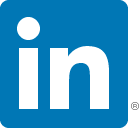Everything needs a home, or a molded housing.
Nearly every product on the market, whether a handheld device, a specialty tool kit or a medical appliance, is going to require some type of enclosure, whether internal or external.
The process of launching a new product, or an updated version of an existing one, can be an exciting time for engineers, product managers, and operations teams alike. And often, the most visually prevalent portion of the product, the outer enclosure or housing, is the last thing on the mind of the engineer. Function tends to be the primary focus with outer shells, liners, enclosures and housings coming in a distant last. After all, it’s what’s inside that matters, right? Well, sort of.
User Experience
Usability testing refers to evaluating a product or service by testing it with representative users. Typically, during a test, participants will try to complete typical tasks while observers watch, listen and takes notes. If that’s not practical for the rapid turn around times demanded in the product development world, simply asking a friend to rattle off some initial thoughts on a design can go a long way.
| Remember bag phones that you had to unzip or car phones that you had to “undock” from the passenger seat footrest before use? Obviously, as technological advances occurred, the phone body was streamlined. | |
 |
Put yourself in a user’s shoes and you’ll quickly realize that enclosure design is pivotal in delivering a buyable product that’s both usable and functional, and quite possibly of equal importance (according to the marketing team), is its visual appeal. |
 |
And a big factor surrounding usability is the case’s robustness, appearance, and functional control placement, all neatly assembled with the ever important outer enclosure being the glue that nests everything together. Sometimes there is a suitable off the shelf option. But when there is not, you’ll need to put on engineering shoes and design from the ground up. |
Enclosure Design Considerations
When designing prototypes for an enclosure, here are some things to keep in mind:
- Designing with the end (production) in mind is key.
- Prevent unnecessary re-designs because the first prototypes aren’t moldable.
- It’s a good idea to involve the in-house molding engineer or your injection molding supplier from the beginning to flesh out any challenging geometries.
- 3D printing and CNC machining is ideal for the first half a dozen or so prototypes.
- Beyond the two-digit (10+) mark, more cost-effective and quicker lead time options can include cast urethane, prototype tooling, and thermoforming.
- Injection molding for quantities north of a hundred or so can be surprisingly cost effective, and quick.
- Make sure to solicit quotes from your molding shop throughout the design iteration process to see how geometry changes and feature placement affect pricing.
- Consider utilizing a supplier with both prototyping and production capabilities in house to provide maximum transparency throughout the process.
- PrintForm provides complementary DFMs for every part we quote, and we’re happy to do so at each milestone, even well before injection molding is on the calendar.
IT’S NOT FINISHED UNTIL THERE IS A SURFACE FINISH
Now that we have the nuts and bolts of the initial considerations of an enclosure laid out, the next step is material selection and surface finish options.
The majority of off the shelf products that have enclosures are made of general purpose ABS, PC or PE material and a basic SPI B/C-# surface finish. But your product isn’t one of those 99%, right? Most of the programs for which PrintForm is the parts provider are on the leading fringe, requiring some type of outside the norm specifications. Higher end materials including flame rating, medical certifications, UL thresholds, etc. are all things that need to be ironed out early to prevent issues or delays in final production.
Some additional considerations that should be discussed with your molder:
- Assemblies & mating parts, drawings and call outs.
- Anytime another part is intended to function or assemble with the enclosure it’s important to provide details to your molder and prototyper.
- Hardware, inserts, threads, and clasps are often part of enclosure design.
- Dicusss the options with your supplier to find out what they recommend vs what capabilities they have (molded in, pressed in, heat staked, helicoil, etc.)
INFOGRAPHIC
A typical prototype through pre-production schedule may look something like this:

About the Author: Bill Artley is the Vice President of Operations at PrintForm and has written many articles & white papers on product development, sourcing, additive manufacturing, and materials. He is a contributing author and peer reviewer of The 3D Handbook (http://a.co/h9fL1b5), a top 10 Amazon Best Seller in it’s category.





